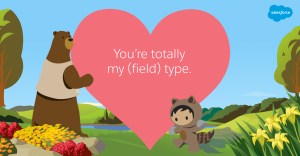
Even if you manage to get to the stores early, when there’s still plenty of selection, finding the perfect Valentine’s Day card can be a surprisingly challenging task.
Though they are all technically related to the same holiday, each card has so many variables to consider. This includes the category (which can range from those intended for a spouse to your mom), the overall design and the sentiments expressed inside, among other things.
Choosing can be difficult for two main reasons. First, a Valentine’s Day card says something about the person giving it. You want something that accurately reflects your personality and style, as well as conveying the right message to the recipient. Second, a Valentine’s Day card is all about recognizing — and making an effort to sustain — an important relationship.
At the risk of romanticizing the world of business, this is not unlike the relationships that companies want to sustain with their customers. When customers “feel the love” from their vendors and suppliers, they’re far more likely to stick around.
If you thought choosing a Valentine’s Day card was hard, this might sound even harder. With the right technology, though, it doesn’t have to be. Just use Valentine’s Day cards as a metaphor to develop a strategy that spreads the love among more of your customers:
Red Hearts Are Just The Beginning
The Valentine’s Day section of a greeting card rack can almost look like a block of the same shade of red. There will also be a lot of the familiar motifs, which not only include hearts but roses, birds or even images of jewelry. Usually, though, greeting card makers find a way to make certain cards stand out from the crowd, using an eye-catching font, an unusual size or an unexpected image.
Marketers who create content that aligns closely to their audience’s core interests can do the same thing. Using data from tools like Marketing Cloud, for instance, they can ensure their white papers, blog posts or other assets reflect a level of insight that sets them apart from competitors who may produce content about similar topics. And unlike creating a single greeting card, marketing automation lets them build journeys across email, the web and social media, too.
It’s What’s Inside That Counts
When you open up a card, you expect to see two things: some kind of poem or prose that evokes a particular message about love, and a signature from the person who sent it. In other words, something more or less generic is combined with something personal. When it’s done right, you’re convinced you’re loved by the person who sent it.
For companies, making a sales pitch — or even a more subtle call to action (CTA) within a piece of marketing content — needs mix those elements as well. While there will be standard information about your products and services that would apply to any customer or prospect, you need to add a level of personalization that reflects how well you know them or have researched their needs. Data from CRM like Sales Cloud, especially when combined with Marketing Cloud, allows for greater context in whatever is communicated to a customer — sort of like adding a handwritten message that builds on whatever was printed in a Valentine’s Day card, rather than just a signature.
Don’t Forget That Little Extra ‘Something’
Sometimes a Valentine’s Day card is perfectly fine on its own. In certain circumstances, though, you may want to kick it up a notch — maybe by delivering the card with a box of chocolates, flowers or another item that reinforces just how much you care. Much like choosing the wrong card, though, throwing in a gift just for the sake of it can run the risk of backfiring miserably.
This is worth keeping in mind from a customer service perspective. When customers approach companies with questions or complaints, they want their issue resolved. Beyond that, however, some of the smartest organizations have learned that they retain customer loyalty by offering additional value of some kind. This doesn’t mean tossing in a free stress ball or trinket. It can be additional information about how to get more out of their purchase. It can be advice on how organizations of a similar size or those that work in the same industry have applied the product to specific business objectives. Or it could be an offer to try a related or complementary product that they hadn’t yet considered.
All these options are available when you have data through tools like Service Cloud that allow organizations to spend less time on passing customers around to various agents and instead look more granularly at the information that really matters to them.
It’s Like You’re Reading Their Minds!
There’s nothing better than when someone opens a Valentine’s Day card and looks up with a knowing smile, as if to say they realize the design, message or other elements refer to something in your shared history. It’s sort of like the way really close couples can sometimes finish each other’s sentences — almost as though they could predict exactly what their loved one is most likely to say next.
Companies can achieve the same effect through artificial intelligence tools like Einstein that bring predictive capabilities to sales, marketing and even customer service. It allows them to identify a customer’s needs even before the customer does. Or it can allow them to predict their behaviour when they are presented with information or ideas so that it leads to the desired outcome.
For all the similarities, though, technology and Valentine’s Day cards have one major difference. You only send a Valentine’s Day card once a year. With the right tools, however, companies can improve the way they market, sell and service customers all year long — which is the kind of treatment they’ll truly love.

























